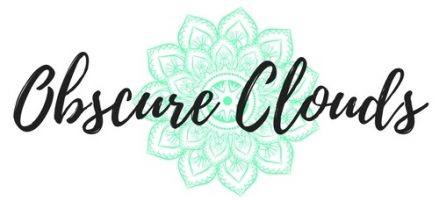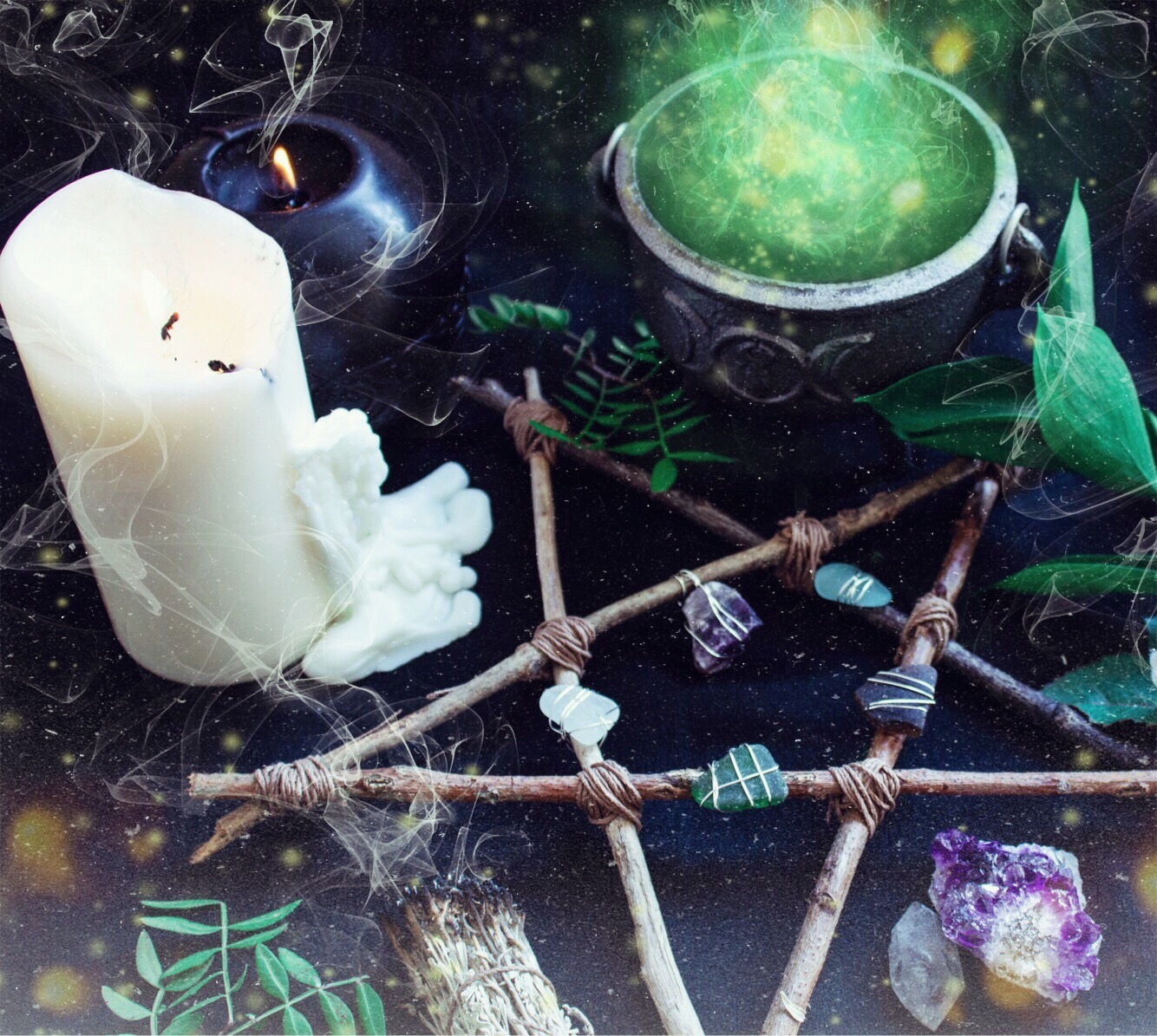Would it be weird to say that I’ve recently “come out” as Pagan? Maybe that isn’t the right term for it though, as it implies a particular moment of revelation, whereas this has been a much more gradual process, as I’m sure the decision to follow a particular spiritual path often is. Whereas a few months ago I would have described myself as “spiritual but not religious,” I now find myself becoming increasingly comfortable with the idea of belonging to this particular tradition.
Though my interest in Paganism began over a year ago (completely accidentally, as a university research project took me in an unexpected direction) it’s only now that I’ve spent time learning more about it, and having had the opportunity to live in Scotland for the past few months—a place rich with Pagan history—that I’ve truly come to feel that this path could be right for me. At least, in so far as I make it right for me. “Paganism” today encompasses so much, so many different beliefs and practices, that it hasn’t been at all difficult to fit this perspective in with previous worldviews. Rather, Paganism has actually helped me make sense of many of these thoughts and feelings.
Although I’ve only really been incorporating Paganism into my life for a short period of time, I feel as though it’s already enriched my life, having had a significant impact on the way I understand myself as a human being and connect with the world around me.
What is Paganism?
The term “Pagan” is exceptionally broad, potentially referring to any number of religious (particularly magico-religious) and spiritual identities. While originally the term was used to describe any non-Christians, within the present context it’s more often used as an overarching term for those who participate in the revival of ancient traditions, celebrating the cycles of the seasons, of birth, death and rebirth as it is expressed through the natural world. Within this framework, Pagans, or “Neo-Pagans” draw lines of connection between contemporary and ancient practices by worshiping the natural world, often as it is personified by male and female deities.
Though there is no seamless “Pagan” history from ancient to contemporary times, and Paganism today is obviously quite different from that of thousands of years ago, this link between past and present—imagined as it may be—nonetheless establishes some of the foundational pillars for how the religion is understood today, including the personification of nature (or animism), magical practices, the importance of ritual, and corpospirituality—the belief that the divine is immanent within everything, that this world and the otherworld are intimately interrelated.
The most prominent expression of this form of Paganism today is Western Neo-Paganism, which encompasses relatively new traditions such as Witchcraft, Druidry, and Neo-Shamanism, wherein magic, which is basically the manipulation of energies to produce desired results, is central to the practice. And while I quite like this magical aspect of Paganism, and certainly find myself attracted to it in many ways, I also believe that Paganism may extend beyond these Western traditions to include a plethora of diverse spiritualities and perspectives. Because Paganism, as one of my favourite scholars on the subject Michael York points out, can be expanded to include a vast number of other spiritual beliefs and behaviours, from Chinese folk or Japanese Shinto religion to Native American and other Indigenous spiritualities. What unities these different spiritual perspectives is a focus on balance in harmony, holism, and most importantly, an understanding of the divine as something that is not “wholly other,” but entirely immanent—right here, right now, in every rock, every tree, every wave in the ocean and every breath you take.
Within the Pagan worldview then, nature itself is sacred. There is no separate transcendental god “up there,” no hierarchy between the physical and spiritual, sacred and profane. Though Paganism is polytheistic and pantheistic, its Gods and Goddesses are worshiped ultimately as personifications of nature, representing the male and female energies that flow within it, rather than existing beyond it.
Interconnectedness
With this notion of nature as sacred comes the key idea of interconnectedness—basically the idea that everything within this world is fundamentally interconnected in a profound sense. Everything, material and immaterial, is tangled up together, moving with one another, all part of a grand cosmic dance. What we see as separation in everyday reality is in actuality just part of one great continuum—separation exists only in so far as we choose to perceive it. And Paganism, for me at least, is about looking beyond these separations in order to glimpse these underlying connections. It’s about being able to feel this interconnected nature of the world at one’s core—knowing and experiencing it in meaningful ways. It’s about knowing yourself through these connections, recognizing that you are not a singular, closed-off being who ends where the world begins, but an integral part of that world, just as it is an integral part of you. It’s about realizing that this thing you call “I” extends beyond skull and skin to incorporate the totality of the environment. For every organism includes within it its entire environment, and human beings are no exception.
I think maybe John Muir put it best when he wrote that “when we try to pick out anything by itself, we find it hitched to everything else in the Universe.” And John Muir, with the way he wrote about ecology and the awesome beauty of nature, seeing everything on this planet to be alive, breathing, all pulsating to the same beat, may very well have been considered Pagan… At least, by my own definition of it.
What Paganism Means to Me
For many years now, I’ve been fascinated by religion, particularly those that fall outside of the Abrahamic tradition. And though I’ve dabbled in some Eastern practices, such as Advaita Vedanta and Buddhism, and have certainly learned a great deal from them, I’ve never really identified with any of these. Even though they’ve had major impacts on my life, and been integral to shaping my worldview, the paths themselves never felt right, so I never followed them to fruition.
Plus, having grown up in an atheist family, surrounded by mostly atheist friends, and having dated almost exclusively atheists (some of them quite outspoken about these views), taking an interest in religion and spirituality was seen as being, simply put, weird. Whenever I brought it up, I’d always be faced with the question of: why would you actually want to do that?
Why indeed. As conscious beings, we are always searching for some kind of meaning, seeking some bigger picture that we might use to make sense of the world around us. In this sense, it might be said that devotion and veneration are natural expressions of the human condition. Michael York has even gone so far so as to say that Paganism, and its passionate, sensuous, and open form of worship is the natural state of the human spirit, particularly when compared with the more restrictive forms of Abrahamic religiosity.
Whether we might consider it “innately human” or not, Paganism just makes sense to me. It feels right in a way that other spiritual traditions haven’t. If I’m going to believe in anything, dedicate my soul to any path, it’s not going to be to some “wholly other,” transcendent idea of deity. It’s going to be to the here and the now, to the spirit that is within the material, rather than above or external to it.
If I’m going to worship anything, it’s going to be the grass beneath my feet and the clouds above my head. My hymns I’ll find in the sound of trickling water as it runs through a forest creek. The pages of my holy text will be the leaves on the trees, sacred verses found in the patterns of the bark. Nature will be my temple, and spiritual moments will not occur through prayer, but in looking out onto the sea at sunset, or standing at a mountain’s edge.
For me, being Pagan ultimately means understanding that the otherworldly is inextricably tied to the this-worldly, that the sacred is both within and all around us. It’s about understanding this, and then living accordingly. “Pagan” is more than just a label I’ve decided to stick on myself. It’s a particular perspective and way of being-in-the-world that shapes my actions, beliefs, and attitudes. It means appreciating and celebrating this earth, and everything within it.
And it’s more than just an individual identity. It also means belonging to a kind of community, participating in and enacting this shared identity, being a part of something that spans across space and time. Even though Paganism is often practiced independently, belonging to any religion or spirituality is in and of itself a social action. And as a student of Social Anthropology, I can definitely say that this community aspect, whether it’s actively sought or not, is pretty important to any form of spiritualty and can enrich one’s life in untold ways.
So, in a nutshell, that’s basically why I’ve started identifying as Pagan. Why my house might always smell like burning sage, or why you might find me leaving offering of herbs and flowers in strange places. Or even why you might find me dancing wildly under a full moon. Because yes, Pagans do that, and it’s fantastic.


